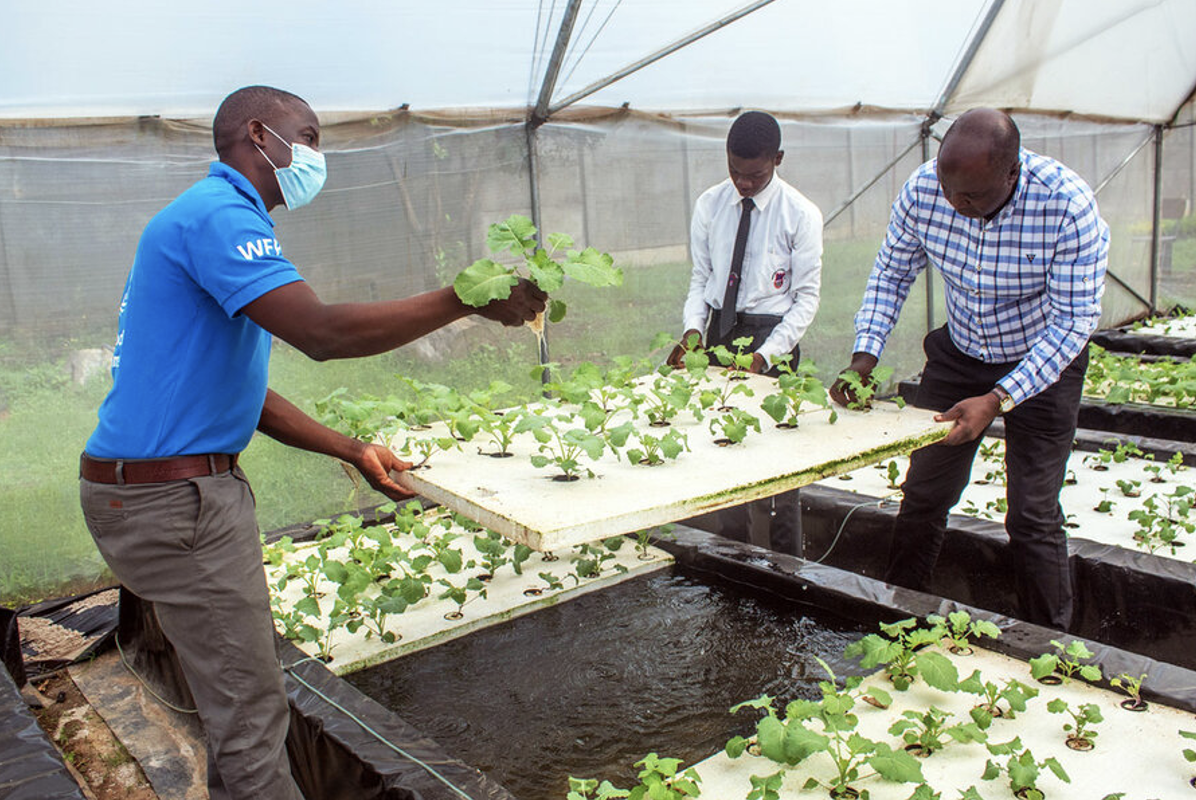Food for Thought: The Next Agricultural Revolution
Farming methods critical to the future of our planet
Court Ash-Dale
March 20, 2023
Global food insecurity threatens the survival of our species, according to the United Nations. Today’s skyrocketing food prices indicate a global food industry struggling to keep up with our growing population.
Some futurists believe it’s time for a food revolution.
A recent NASA study found 20% of the world’s food supply is at risk by the end of the decade. However, Dan Houston—founder of next-generation agricultural tech firm AgriPlay—warns we may face significant shortages within the next 3-5 years.
“The War in Ukraine has disrupted the global production of chemical fertilizer, a necessary ingredient in our food supply,” Houston said in an interview with The Observer. “However, food insecurity is a much bigger problem than most people realize.”
Today’s agricultural industry relies heavily on chemical fertilizers, pesticides, and industrial-grade machinery to maximize productivity. The United Nations Food and Agricultural Organization said these practices erode farmland 10-1000 times faster than it naturally regenerates, putting us at risk of losing it all within 60 years.
When farmland erodes, less water is absorbed, producing chemical-dense runoff that pollute our water sources.
“A world without food could bring on a cascade of societal crises,” Houston predicted.
If grocery stores can no longer keep up with demand, millions of people will likely turn to indoor farming. A large-scale shift to indoor farming would push energy grids to failure and turn billions of people into climate refugees.
“Many of history’s vanished civilizations were lost to drought and famine. Modern civilization is not immune to collapse,” he continued.
However, there are viable avenues toward a more sustainable and future-proof global food system. Vertical farming may offer a feasible solution for meeting the challenges of tomorrow.
This is one vertical farm built by Plenty, one of America's largest vertical farming companies.
Vertical farms are multi-story buildings that use advanced technology and climate-controlled environments to grow crops year-round. By growing plants in nutrient-rich water rather than soil, these high-tech systems produce twice the yields of conventional farms while using half the space and 95% less water.
Hydroponics, used in vertical farming, is a way of growing plants in nutrient solutions rather than soil, and can be scaled significantly.
In Zambia, 23 hydroponic greenhouses are being used to produce 30,000 kg of fresh produce annually to fight its growing food insecurity problem. In the United States, a single vertical farm grows 3 million pounds of tomatoes annually.
“Where there’s an outlet and fresh water, vertical farms can be built just about anywhere. I am confident this is going to be how we grow most/all our food in the coming years,” Houston said.
Hydroponics work even without the expensive equipment found in up-scale facilities. Image courtesy of the World Food Programme.
According to Houston, the initial investment for efficient high-tech vertical farms can be as high as $35 million for 80,000 square feet. However, he believes that instead of solely focusing on the immediate costs, we should consider the value they provide for our future.
Governments tend to invest in farming systems that may not be sustainable in the long run – such as which can be costly, says The Economist.
The global food industry spends around 75% of its revenue on production, according to the World Bank’s director of agriculture. “That’s equivalent to over 7% of current global economic yearly outputs—a bill that is simply too high.” Due to negative effects such as inaccessibility to nutritious food and environmental degradation, there appears to be an expiration date on our food system.
Governments worldwide must invest in strategies that work and will last. Houston noted he is seeing more public sector funding in his company and industry—a good omen for the future of vertical farming and perhaps humanity.
Read how this design proposal plans to feed an entire town. Image courtesy of Pawel Lipiński and Mateusz Frankowski.
Vertical farming can play an important role in addressing both world hunger and climate emissions. Although a large-scale shift towards vertical farming would require significant investments in infrastructural development, these costs are necessary to create a sustainable world for future generations.



